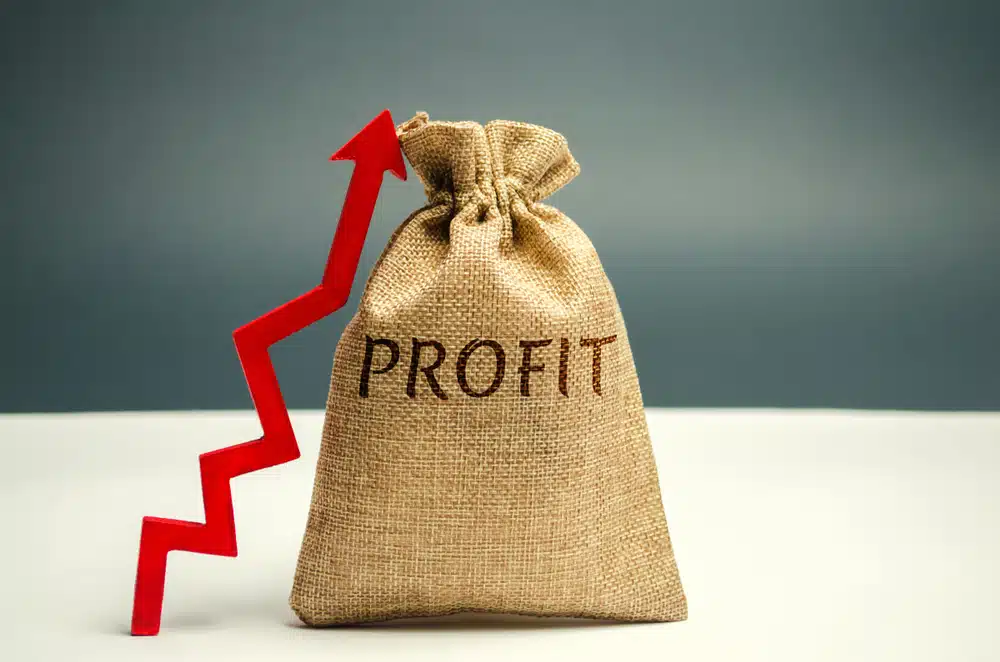
On average, a well-established coffee shop in the UK can earn between £150,000 to £400,000 in annual revenue. However, there are highly successful and popular coffee shops that exceed these figures, making millions of pounds in revenue.
Profit margins in the UK coffee shop industry typically range from 5% to 15%, with the average being around 10%. These margins can be influenced by operational costs, overhead expenses, staffing, ingredient prices, and marketing efforts.
It’s important to note that these figures are general estimates and individual coffee shop performance can vary significantly based on local market conditions and other factors specific to the UK.
Costs to Start a Coffee Shop
Whether you’re running a quaint coffee kiosk or a charming café, acquiring the right equipment is crucial to brewing exceptional cups of coffee. This comprehensive cost guide will assist you in budgeting for the initial expenses of your coffee establishment, including staff costs, sourcing fresh roasted coffee beans, procuring food supplies, and launching your initial marketing campaigns.
- Initial Investment – £400,000 – £1,200,000
- Coffee Equipment – £64,000 – £240,000
- Permits and Licenses – £400 – £2,400
- Marketing Initiatives – £240 – £2,400
- Contingency Funds – £16,000 – £560,000
Financing for Your First Year
The initial year of establishing your business holds significant importance, demanding careful attention and financial commitment. Launching your coffee shop involves various expenses, such as startup costs, assembling a skilled team, securing an ideal location within a desirable neighborhood, comprehensive financial planning for operational expenses, and obtaining the necessary permits and licenses – all of which require meticulous accounting and time investment.
Contingency funds play a vital role in ensuring the smooth operation of your coffee shop during its initial years, bridging the gap until profitability is achieved. Maintaining accessible liquid assets through a combination of financial resources, including loans, savings, and lines of credit, helps cover unforeseen expenses and staffing costs.
Even the most successful businesses understand that they are not exempt from Murphy’s law, and having contingencies in place is essential.
Average Coffee Shop Costs
Managing your coffee shop involves monthly expenses that are likely to comprise 75-85% of your monthly sales. During the initial years, it may be necessary to make additional investments in your shop to offset potential losses in labour, food costs, or marketing activities.
Despite having the finest cold brew process in town, establishing solid financial plans is crucial for ensuring the long-term success of your coffee shop.
- Monthly Operating Costs – £8,000 – £40,000
- Insurance – £400 – £6,400 per month
- Utilities – £800 – £1,000 per month
- Marketing – £400 – £4,000 (3-6% of sales)
- Food Costs – £3,000 – £15,000 (30-35% of sales)
- Staff Wages – £1,500 – £15,000 (24-40% of sales)
Forecasting Your Coffee Shop’s Sales
In the initial year of your restaurant, making accurate predictions about its month-to-month growth can be challenging due to the absence of sales history. However, certain factors such as seasonal peaks in your area or the implementation of effective marketing strategies can serve as key performance indicators (KPIs) to help you forecast growth.
To begin, it is essential to calculate your coffee shop’s daily capacity, considering the number of guests you can accommodate and serve during each shift. Based on the projected profits from coffee and food sales, you can estimate the potential revenue your shop can generate per shift.
It is important to note that operating at full capacity during every shift may not be feasible, especially in the first year. By leveraging sales data from a specific period, such as a month or even a week, and utilizing the appropriate Point of Sale (POS) technology, you can analyze the average sales from each day and calculate the average for each shift accordingly
Average Coffee Shop Revenue
Coffee shops in the UK typically generate an average revenue of 75% to 80% of their sales, which is notably higher than certain restaurant business models. The specific revenue of your coffee shop is influenced by factors such as its location, menu offerings, labor costs, and various other considerations.
Coffee Shop Profit Per Month
Coffee Shop Monthly Profit are typically range from 3% to 5%, although some establishments may experience margins as low as 0% while others achieve as high as 15%.
To calculate the profit margin of your coffee shop, you can use the following equation:
monthly sales x profit margin = profit For instance,
If your coffee shop achieves an average monthly sales figure of £16,000 and maintains a profit margin of 4%, the resulting profit would amount to £640.
Coffee Shop Owner’s Salary
Small to medium-sized coffee shop owners in the UK can expect to earn an annual income ranging from £45,000 to £120,000. Typically, the owner’s salary falls within the range of 2% to 6% of the coffee shop’s sales. In smaller operations, where the owner assumes multiple roles such as head roaster, bagger, accountant, and cold-brewer, the salary may constitute a higher percentage of the profits, reflecting the level of personal labor invested.
Typically, a business owner’s salary accounts for less than 50% of the total profits generated by the business. As the owner, you have the responsibility of making crucial decisions regarding your own compensation while allocating profits towards the business’s growth. The first year can be particularly challenging, but implementing effective marketing strategies and leveraging technology to enhance sales will pave the way for your coffee shop’s success.
Timeline to Breaking Even
Many coffee shops in the UK achieve profitability within the first few years of operation, contingent upon factors such as food production costs and other key performance indicators (KPIs). It is not uncommon for coffee shop sales to double by the fifth year.
It is crucial to carefully budget for contingency funds, startup costs, and the expenses associated with the first year of operations. With a comprehensive understanding of how to forecast your coffee shop’s revenue, you can estimate the timeline for reaching the break-even point and predict the first profitable month.
Let’s take a look at an example of a coffee shop’s journey towards breaking even:
Authenticity Coffee, a charming village establishment in the Birmingham area, serves as an illustrative case. Their business plan aligns with their local community. They begin with a combination of lines of credit totaling £300,000 and owner’s investments of £300,000.
Category Cost Coffee Shop Equipment £157,500
Permits & Licenses £1,600 Contingency Funds £382,400
In their first year, Authenticity Coffee experiences steady business from passing trade. However, operating a high-quality coffee shop in a major city incurs higher employment costs compared to other restaurant models.
Category Cost/month
Shop Rental/Mortgage: £2,000
Insurance: £500
Utilities: £1,800
Food Costs: £6,500
Wages: £12,000
Marketing: £1,200
Loan payment: £4,800
Total: £28,800
The annual cost of operations for Authenticity Coffee amounts to: £345,600
Conclusion
In conclusion, the revenue and profitability of coffee shops can vary significantly depending on various factors such as location, menu offerings, operating costs, and effective management. While it is challenging to provide an exact figure on how much coffee shops make, it is essential to consider key performance indicators (KPIs) such as sales growth, profit margins, and the ability to manage expenses effectively.
Coffee shops have the potential to become profitable within the first few years of operation, with sales often doubling by the fifth year. However, it is crucial for coffee shop owners to carefully plan and budget for startup costs, operational expenses, and contingencies to ensure long-term success.
By accurately forecasting revenue, controlling costs, implementing effective marketing strategies, and offering quality products and services, coffee shop owners can create a solid foundation for growth and profitability. Additionally, continuously monitoring and adjusting business strategies, staying attuned to customer preferences, and investing in technology can contribute to sustained success in the highly competitive coffee shop industry.
Lee Jones is a seasoned Business Finance Specialist with over two decades of invaluable experience in the financial sector. With a keen eye for market trends and a passion for helping businesses thrive, Lee has become a trusted advisor to countless organizations seeking to navigate the complexities of finance.


